#Grand Valley State University
Text


Grand Valley State Volleyball
#Grand Valley State University#Grand Valley State Lakers#volleyball girls#college volleyball#athlete#female athletes#college athlete#college girl#bikini#athletes in bikinis
65 notes
·
View notes
Text

Get a load of these nerds needing a water tower.
#hope college#michigan tech#shenanigans#napkin dispenser#travel#Grand Valley State University#Allendale#this is Yuri
10 notes
·
View notes
Text

Part Time Jobs for International Students in the USA
Join Link: https://part-time.makemoneycareer.com/?pub=14565
Part Time Jobs for International Students in the USA
#the owl house#united states#indian in united states#mortgage rates#interest rates#part time job in arizona state university#arizona state university#on campus job in arizona state university#united kingdom#grand valley state university#my part time job in usa | florida state university | ms in us#parttimedining#part time jobs in usa telugu#part time job#parttimejobs#part time jobs#part-time job#how to get a part time job#usa part time jobs telugu#part time telugu
2 notes
·
View notes
Text

Puget Sound Piano Trio is touring OH and MI with three performances this weekend. Program includes Miguel del Aguila’s #BARROQUEADA, a work they West-Coast-premiered. Info:
1/19/2024 - 8:00pmMoore Musical Arts CenterBowling Green State University, OH
1/20/2024 - 7:00pmKeene Theater, East QuadUniversity of Michigan, Ann Arbor, MI
1/22/2024 - 7300pmSherman van Solkema Recital HallGrand Valley State Univ, MI
Puget Sound Piano Trio: Maria Sampen #violin Alistair MacRae #cello Ronaldo Rolim #piano
#piano trio#Barroqueada#Miguel del Aguila#Puget Sound Piano Trio#violin#cello#piano#2024#performances#Bowling Green#State University#of Michigan#Ann Arbor#Sherman van Solkema#Hall#Grand Valley State#American composers#contemporary#latinx#classical#chamber music
1 note
·
View note
Text


Grand Valley State Soccer
#Grand Valley State University#Grand Valley State Lakers#college soccer#soccer girls#athlete#female athletes#college athlete#college girl#bikini#athletes in bikinis
48 notes
·
View notes
Note
(Preferably fantasy) games with a school setting, and a focus on non-fatal violence and mystery solving?
THEME: Magic School Mysteries
Hello friend, so I have a bit of a wide spectrum of options for you today, some of which are more focused on magic, some more focused on mystery, and some more focused on violence. I hope you find something that hits what you're looking for!

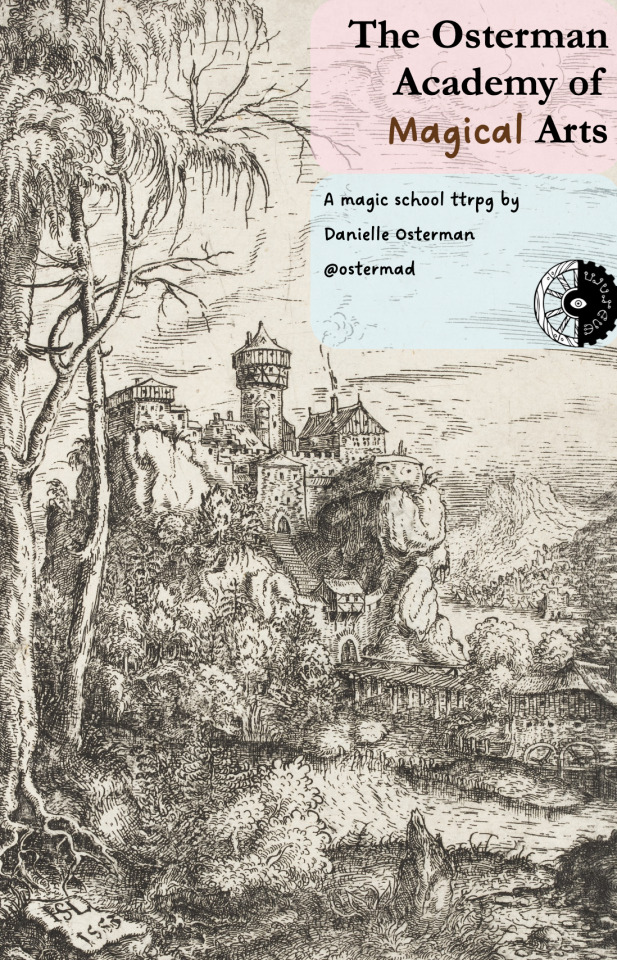



Lofi Bards to Study and Relax To, by Ross Eaglesham.
You and your friends are students at a magical high-school, college or university and exams are coming up! Go on magical adventures, reveal ancient secrets and forge deep bonds with your friends - just make sure you don’t miss class!
To help you on your journey, you’re equipped with one of your most prized possessions - the Notestrider. When a reel of magical tape is placed in this small, arcane box, it plays a recording of whatever is stored on the tape; usually through a strange pair of mechanical earmuffs. You and your tight-knit group of friends all put together a mixtape of your favourite songs for studying - 'lofi bards to study and relax to' - and the relaxing beats and chilled out vibes might just be enough to see you through the crazy world of arcane education.
With many secrets to uncover while you’re at a magical institution, Lofi Bards to Study and Relax To looks to have quite a significant capacity to really sink you into the skin of your character. Music can be very good at helping you tune into your emotions and put you in a specific state of mind, and since the Notestrider is meant to help your characters prepare and focus for all of the struggles ahead, you’ll be using that music to put yourself into the shoes of your character.
This is another game that doesn’t seem to prioritize violence at all, but it can make whatever mysteries you decide to unravel incredibly personal. There's also an expansion that includes Artifacts and character options for you if you want access to a broader span of game elements. If you want to really emphasize the student experience in a slightly more magical setting, I’d definitely recommend this game.
The Osterman Academy of Magical Arts, by Wheels Within Wheels Publishing. @ostermad-blog
Welcome to the Osterman Academy of Magical Arts, the premier school for spell craft. Our faculty are leaders in their fields, our staff unparalleled, and our students extraordinary.
All OAMA students are required to reside on campus for the duration of their studies, but the wide variety of campus events ensure that students always have many ways to spend their time, including student-run clubs, a bustling student center, athletic meets, and trips to nearby urban centers.
OAMA also boasts two unique educational opportunities: the class trip and individual projects. Every year, students in each class go to a special destination for a more hands-on educational experience. Furthermore, at the end of each year, all students pursue an individual project tailored to their specific interests and supervised by one of our esteemed faculty.
The Osterman Academy of Magical Arts has a sliding scale to determine how popular magic is, and how entrenched it is in the world around you. It comes with a grand total of 66 backgrounds to choose from or roll randomly for, including Clown-gician (you thought this was clown school) and Fun Guy (secret colony of fungi masquerading as the life of the party in human form). You’ll also choose your character’s class schedule, create friendships with other characters, and take exams to determine how well they did in their courses.
There isn’t much that allows you to do violence, but if you want to solve mysteries in this game, I think the various character strengths and school classes present in this game give you a really diverse set of approaches to finding answers and solving problems.
Mystic Punks, by mysticpunks.
Students have gone missing at Star Valley High School and no one seems to care. You determine that their disappearances are the result of an otherworldly invasion.
As a teenage misfit, you’ve only ever used your mystic powers to perform dark rituals, but now those powers are the only thing that can save your classmates and stop a supernatural legion from consuming you and your school.
Based on the solo RPG Mystic Punks: The Collected Edition, Mystic Punks Tabletop RPG invites you and your friends to delve deeper into occult mysteries and explore beyond Star Valley High School.
With supernatural threats abounding and dark threats surrounding you and your peers, Mystic Punks probably has a big chance to bring violence and conflict to the fore. The original game appears to be devoted to a solo roleplaying experience, but the Quickstart appears to allow for group gaming as well. I can’t guarantee that the violence is non-fatal however; this game is sold as a horror experience, so the threat of death probably looms over all of your characters.
Student Protectors of Malaysia, by Aaron Lim / @ehronlime
You are a 17-year-old secondary school student with extraordinary powers. You’ve connected with friends in your school who have similar powers and have been working together to protect your town from supernatural threats. It’s been hard juggling your commitment to use your powers for good with your responsibilities to your families and your studies, but it’s been rewarding.
Now, you’re almost done with school and you really should be focusing on your preparation for the SPM exams, but threat has surfaced that could mean disaster for the entire town if you do not act quickly. Your final year awaits…
Student Protectors of Malaysia probably best fits all of the criteria that we’re looking for here. There are three phases to the game: Student, Protector and Marking. In your Student phase, you’re using your abilities to investigate mysteries in order to figure out what exactly the threat is, and to prepare for whatever your big action scene is going to be. In the Protector phase, you’ll be targeting the threat, whether that be a roaming monster, a rogue magic user, or a more mundane (but powerful) threat. You’ll have to do this while balancing schoolwork, family obligations, and just daily teenage life. Finally, the Marking Phase reflects downtime, assessing how smoothly you solved the problem and how your adventure affected your journey towards personal goals.
The system for this game is influenced by Powered by the Apocalypse, with moves written out for specific situations, like Take Decisive Action, or Recall information. You’ll roll 2d6 and add modifiers up to a maximum of +3. There’s also bits and pieces from Forged in the Dark, most prominently in the Downtime phase and the Stress that your characters accrue through adventures and relieve through hobbies. The game definitely skews more towards secret superheroes than it does towards a magic school, but you could restrict the electives available to your students to make their powers seem more magical and otherworldly than technical or genetic.
The “Gardening” Club, by Wizard of Ox.
Welcome to our very legitimate high school club where we don’t actually do a lot of gardening! We are open to everyone: cheerleaders, talking vegetables and even people who actually garden. We only have one rule: keep our true agenda a secret. Grab a nice cup of herbal tea, water the cacti and search for clues. We must get to the root of things!
You are a group of high school students who, despite being different from each other, have an interest in common: solving mysteries. Since a detective club would be too on the nose, you made a “gardening” club as a front. Each one of you has different abilities you can use to get to the root of things, as well as codenames that give special powers. Can you work together and find out what is going on?
I’m very intrigued by this game. It feels like it would be very easy to modify to fit a setting of your choice. The instruction sheet is only 5 pages, and all of the character concepts are charmingly plant-themed (with a little bit of magic on the side)! The group will set out on missions to discover clues, hoping to piece together the answers to a larger mystery. You will collaboratively fill out a Deduction Tree to figure out how all of the clues connect. If you like collaborative mystery solving this is absolutely the game for you!
Games I've Recommended in the Past
Breakfast Cult, by Weird Age Games.
My Magic School Post
106 notes
·
View notes
Text
Do the recent or right-now-ongoing crazy global weather scare you? Bother you? Interest you?
I'm pulling this from various media sources, because there is so much crazy weather happening now, or that has happened within the last couple of weeks, it seems like no single media source is picking it up.
From Heatmap AM:
Houston’s floods – More than 400 people in and around Houston, Texas, evacuated their homes over the weekend due to flooding. At least one person, a child, was killed. In one nearby county, more than 21 inches of rain fell over five days last week. The rain has tapered off but the cleanup has just begun.
Brazil’s rain – In Brazil’s southern state of Rio Grande do Sul, days of intense rain caused the Guaiba River to overflow and flood more than 340 cities, including the region’s capital of Porto Alegre. At least 78 people are dead and more than 115,000 have been forced to evacuate. One climatologist calledthe catastrophe “a disastrous cocktail” of climate change and the El Niño effect. “It looks like a scene out of a war,” said Rio Grande do Sul governor Eduardo Leite.
Chile’s fires – Fires in Chile’s Valparaiso region, fueled by an intense heat wave and enduring drought, have killed at least 51 people and burned more than 64,000 acres.
Kenya’s deluge – Flooding and landslides in Kenya from unrelenting rainfall have killed more than 200 people. It is still raining and the weather is forecast to worsen throughout the month of May.
Southeast Asia’s heat wave – A lengthy heat wave has shattered temperature records across Southeast Asia, forcing many schools to close. One weather historian called the heat wave “the most extreme event in world climatic history.”
From the Associated Press (AP):
A weekend spring storm that drenched the San Francisco Bay area and closed Northern California mountain highways also set a single-day snowfall record for the season on Sunday (May 5) in the Sierra Nevada. The wet weather system had mostly moved out of the state by Sunday morning, but officials warned that roads would remain slick after around two feet (60 centimeters) of snow fell in some areas of the Sierra. “Did anyone have the snowiest day of the 2023/2024 season being in May on their winter bingo card?” the University of California, Berkeley Central Sierra Snow Lab asked on the social platform X. The 26.4 inches (67 centimeters) of snowfall on Sunday beat the second snowiest day of the season — March 3rd — by 2.6 inches (6.6 centimeters), according to the lab.
From Yale Climate Connections:
For the first time since the 2010s, a high-risk outlook for severe weather (level 5 of 5) has been issued for parts of the Great Plains. The outlook was put in place at 8 a.m. EDT Monday, May 6, and updated at 12:30 p.m. EDT Monday by the NOAA/National Weather Service Storm Prediction Center, as a busy few days of severe weather moved into high gear. Dozens of tornadoes could erupt by midweek, including in and near Oklahoma on Monday and across a broad swath of the mid-Mississippi and lower Ohio River valleys on Wednesday. Many of the worst tornado U.S. outbreaks of recent years have played out across the Mississippi Valley and Southeast, but multiple rounds of twisters have hammered the Plains since late April, taking at least seven lives and wreaking what will no doubt be hundreds of millions of dollars in damage.
From Wikipedia:
On 16 April 2024, heavy rains caused floods in the United Arab Emirates, affected cities of mainly Dubai and Sharjah, the northern Emirates, and different areas of the Emirate of Ras Al Khaimah. According to the National Center for Meteorology (United Arab Emirates) , this was the country's heaviest rainfall recorded in 75 years. The floods in the Emirates were a part of the greater Persian Gulf floods.
14 notes
·
View notes
Text

A Rare 7,000-Year-Old Clay Figurine Found in Italian Cave
Archaeologists from Sapienza University of Rome discovered a figure with female features in the Battifratta cave, near Poggio Nativo in the Sabina area, Lazio.
That is a clay figurine dating from around 7000 years ago, from the Neolithic period, when the peninsula’s first farming communities existed.
A press release from the Sapienza University in Rome says objects of this kind are “very rare in Italy.” Furthermore, the release said such artifacts are “almost absent” in the archaeological record of the Tyrrhenian slope.
The Battifratta Cave is located in the municipal territory of Poggio Nativo, in the Casali locality, on the left side of the valley of the Riano River, a minor tributary of the Farfa. The Battifrata cave is distinguished for its maze-like configurations and layouts, graced with stalagmites and stalactites with a transient spring at the entrance of it.
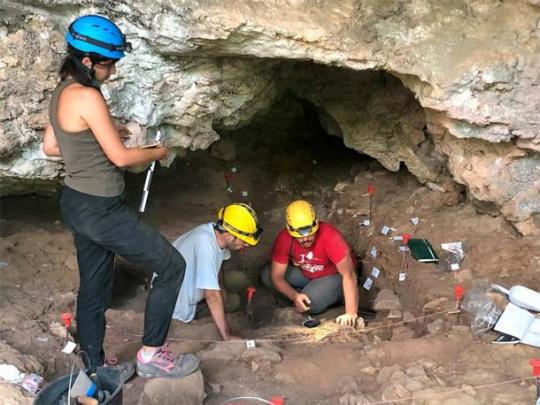

The modern research at the Battifratta Cave is part of a larger project being conducted by the Sapienza Grand Excavations Fund on the prehistoric settlement of the Farfa Valley and its surrounding territories.
A multidisciplinary study coordinated by the Department of Ancient World Studies of the Sapienza University of Rome is looking at “the technological and stylistic aspects” of the figurine to better understand how it was made.
The doll’s facial features, according to the archaeologists, are only schematically hinted at. The researchers, however, stated that the artisan who created the artifact took “greater care” in representing the hairstyle and body decorations.
Dr. Cecilia Conati of Sapienza University said when the presence of ceramics is combined with faunal and botanical finds on several stratified levels, and the discovery of a human skeleton beside the doll, secrets are revealed. This all suggests the spring at the mouth of the cave was not only used for water supplies, but also for “burial and ritual purposes.”
The Battifratta Cave provided shelter and protection for early human inhabitants who relied on hunting, gathering, and rudimentary agriculture for survival around 7000 BC. While specific evidence of ancient rituals in Battifratta Cave is limited, the clay doll strongly suggests it was used for ceremonial purposes.

#A Rare 7000-Year-Old Clay Figurine Found in Italian Cave#Battifratta cave#Sapienza University#ancient artifacts#archeology#archeolgst#history#history news#ancient history#ancient culture#ancient civilizations#ancient art
69 notes
·
View notes
Text
youtube
New Rule: Whoa, Canada | Real Time with Bill Maher
And finally, New Rule. If we want to save our country, we should follow the advice good liberals have given for decades and learn from other countries.
Especially those beacons of progressivism like Canada, England, and Scandinavia, and I agree we should, as long as we're honest about the lessons we're learning. And as long as we're up to date on the current data. Such as, the unemployment rate in the US is 3.8 percent. And in Canada, it's 6.1. And of the 15 North American cities with the worst air pollution, 14 are in Canada.
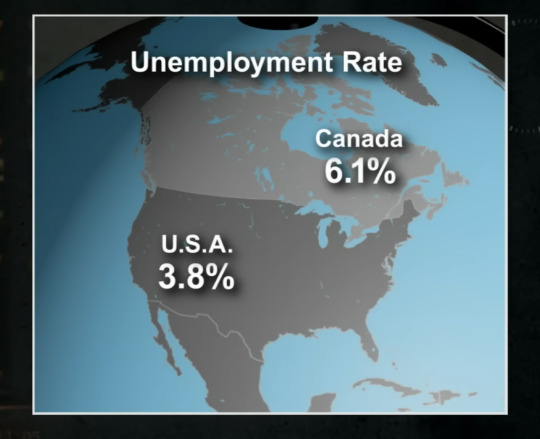

I'm not citing these stats because I have it out for Canada. I love Canada, and its people, and always have, but I hate zombie lies. Zombie lies. That's when things change but what people say about them doesn't. Yes, for decades, places like Vancouver, and Amsterdam, and Stockholm seemed idyllic, because everything was free and all the energy we needed was produced by riding a bike to your job at the windmill. Canada was where all the treasured goals of liberalism worked perfectly. It was like NPR come to life but with poutine.
Canada was the Statue of Liberty with a low-maintenance haircut and cross-country skis. A giant idealized blue state with single-payer health care, gun control, and abortion on polite demand. Canada was where every woke White college kid, wearing pajama pants outdoors who'd had it up to here with America's racist patriarchy, dreamt of living someday. I mean, besides Gaza.

There's only one problem with thinking everything's better in Canada. It's not. Not anymore anyway. Last year, Canada added 1.3 million people, which is a lot in one year. The equivalent of the US adding 11 million migrants in one year. And now, they are experiencing a housing crisis even worse than ours. And we're sleeping in tents. The median price of a home here is 346 grand, in Canada, converted to US dollars, it's 487. If Barbie moved to Winnipeg, she wouldn't be able to afford her dream house and Ken would be working at Tim Hortons. And because of mortgage debt, Canada has the highest debt to GDP ratio of any G7 nation. I don't know what that means, but it sounds bad.


So does their vaunted health care system, which ranks dead last among high income countries in access to primary health care and ability to see a doctor in a day or two. And it's not for lack of spending. Of the 30 countries with universal coverage, Canada spends over 13 percent of its economy on it, which is a lot of money for free health care.

Look, I'm not saying Canada still isn't a great country. It is, but those aren't paradise numbers. If Canada was an apartment, the lead feature might be "America adjacent." And if America was a rental car, Canada would be "America or similar."
And again, honestly, Canada, I'm not saying any of this 'cause I enjoy it. I don't, 'cause I've always enjoyed you. But I need to cite you as a cautionary tale to help my country. And the moral of that tale is, "Yes, you can move too far left." And when you do, you wind up pushing the people in the middle to the right. At its worst, Canada is what American voters think happens when there's no one putting a check on extreme wokeness.
Like the saga of Canadian shop teacher, Kayla Lemieux, whose pronouns are she/her and those. Kayla is now back to being a guy named Kerry, but two years ago when "they" showed up to teach children, the progressive high school "they" taught at said that they-- They, the school, not the person. Really? You couldn't have found another word? We were using that one. Anyway, okay. They were committed to a safe environment for gender expression. Safe for who? What about the children? What about the equipment in that shop class?


You know, there was once a weirdo D-list movie producer in the '60s named Russ Meyer who made low-budget B movies like Faster, Pussycat! Kill! Kill! And Beyond the Valley of the Dolls. Always featuring women who look like this. His movies played in porn houses and were featured in Hustler and Playboy. Okay, fine, but who says, "No, when it comes to huge, ridiculous tits, let's save that for the kids."
And this is why people vote for Trump. They say in politics, liberals are the gas pedal and conservatives are the brakes, and I'm generally with the gas pedal, but not if we're driving off a cliff.

On the trans issue, America is no ands, ifs, or buts about it, absolutely alone in the world now. An outlier country. Last month, England's National Health Service announced that there's "not enough evidence to support the safety or clinical effectiveness" of puberty blockers for third graders, and that they were going to stop fumbling around with children's privates, because that's Prince Andrew's job.

So too with all the other good place countries in direct opposition to America's choice to affirm children's wishes on switching gender, no matter the age or psychiatric history. The Far Left, which always like to use, "Well, Europe does it." Yeah, no, that doesn't work on this one anymore.


Or on immigration. Sweden opened its borders to over a million and a half immigrants since 2010. And now 20 percent of its citizens are foreign-born and its education system is tanking, and it has Europe's highest rate of gangland killings. And one result is that the far-right parties are in the government now there for the first time.




To which liberals say, "Blaming immigrants for the rising crime rate is racist." Yeah, but is it true? Of course, it's true. It's not a coincidence. The quality of life went down after the Somali gangs started a drug turf war using hand grenades.

Calling it "racist" doesn't solve the problem. It hands future elections to someone who will solve the problem, and who, I promise, you're not going to like.

==
For the record, I've said literally all of this, including making the comparison of flying off a cliff if you rely entirely on the gas pedal. Just saying.
When Trump takes office again, and he will, people will act stunned and ask, "how could this have ever happened?"
#Bill Maher#Real Time with Bill Maher#immigration#gender ideology#medical scandal#Canada#Sweden#Somali gangs#medical corruption#religion is a mental illness
11 notes
·
View notes
Text

Columbia XJL-1 coming down to land, likely near Patuxent River, Maryland. The XJL "was large single-engined amphibious aircraft designed by Grumman Aircraft but built by the Columbia Aircraft Corp. It was intended to replace the Grumman J2F Duck but the type did not reach production status."
Recorded October 1, 1947.
Grand Valley State University Digital Collection: RHC-50_320
Information from Wikipedia: link
#Columbia XJL-1#Columbia XJL#XJL-1#XJL#floatplane#united states navy#US Navy#u.s. navy#USN#navy#October#1947#post war#my post
142 notes
·
View notes
Text
Summer Math
As usual, great work from OURFA2M2.
REU Programs
Discrete and Continuous Analysis in Appalachia
Program Runs: June 3 - July 26
Application Deadline: March 4th
Undergraduate US citizens who expect to graduate AFTER July 26, 2024, and especially such students attending university in the Appalachian region apply for the DCAA REU. The projects center around probability and data analysis, as well as linear algebra and combinatorics.
Participants will receive a $4,800 stipend and paid housing for 8 weeks during Summer 2024.
Participants funded by DCAA must be US Citizens or Permanent Residents of the United States. Students who are women, underrepresented minorities, first-generation college students, and those whose home institution have limited research opportunities in mathematics are encouraged to apply.
Applied Mathematics and Computational and Data Science
Hosted at University of Texas Rio Grande Valley
Program Runs: June 13th - August 12th
Review of applications will begin on March 15, 2024 and offers will be made by April 1, but competitive late applications may be considered until April 15.
Students will work collaboratively on group research projects in applied mathematics, mathematical modeling, and computational and data science, including applying theoretical models to physical and biological phenomena. In the application the student should choose one of the two possible research topics:
Wave Phenomena and Mathematical Modeling
Mathematical Modeling of Spatial Processes and Deep Spatial Learning
Only US citizens or permanent residents are eligible.
Women and underrepresented groups in Mathematics are encouraged to apply!
Stipend $5400 plus $900 meal allowance and $1000 travel expenses. Housing will be provided.
Computational Modeling Serving The Community
Program runs: June 10th - August 16th
Application Deadline: March 31st
Held Virtually in 2024
The focus of this REU is computational modeling to serve and enhance communities. Students will be involved in multi-disciplinary, community-based research projects and trained in computational thinking across different disciplines. In doing so, they will gain an understanding of the potential and limits of these tools and how they can serve diverse communities.
The activities of this virtual REU Site will involve a 2-week training followed by an 8-week research project completed under a faculty mentor’s guidance and with the involvement of a community partner.
Only US citizens or permanent residents are eligible.
Students from institutions with limited STEM and research opportunities (such as 2-year community colleges) and tribal colleges/universities are specifically encouraged to apply.
Stipend $7000 + $1400 meal allowance and $2200 housing allowance
REU Program in Algebra and Discrete Mathematics at Auburn University
Program Dates: May 28 - July 19
Application Deadline: March 25th
See the program webpage for more info on problems and ares.
Participants will receive a stipend of $4,500 and will live near campus at 191 College with housing paid.
NSF funding is restricted to US citizens and permanent residents. Other self-funded students are welcome to apply.
Polymath Jr.
Program Runs: June 20th - August 14th
Application Deadline: April 1st
Application Here
The Polymath Jr program is an online summer research program for undergraduates. The program consists of research projects from a wide variety of fields. For more information go to the website linked above.
The goal of the original polymath project is to solve problems by forming an online collaboration between many mathematicians. Each project consists of 20-30 undergraduates, a main mentor, and additional mentors (usually graduate students). This group works towards solving a research problem and writing a paper. Each participant decides what they wish to obtain from the program, and participates accordingly.
MathILy-EST
Program runs: June 16th - August 10th
Application Deadline: April 2th
In 2024 the MathILy-EST topic will be combinatorial geometry of origami, an area that mixes discrete mathematics, geometry, and analysis, under the direction of Dr. Thomas Hull.
MathILy-EST is an 8-week intensive summer research experience for exceptional first-year college students. MathILy-EST provides early research opportunities each year for nine college students who are deeply but informally prepared for mathematics research. The focus of the program is on first-year students, with second-year and entering college students also considered for participation.
Stipend- $4800, housing and meals included.
Internships
Jet Propulsion Laboratory Summer Internship
Programs Begin: May and June
Registration Deadline: March 29th
Summer Internship ProgramThe JPL Summer Internship Program offers 10-week, full-time, summer internship opportunities at JPL to undergraduate and graduate students pursuing degrees in science, technology, engineering or mathematics. As part of their internships, students are partnered with JPL scientists or engineers, who serve as the students' mentors. Students complete designated projects outlined by their mentors, gaining educational experience in their fields of study while also contributing to NASA and JPL missions and science.
Conferences
Women in Data Science Livermore
“WiDS Livermore is an independent event organized by LLNL ambassadors to coincide with the annual global Women in Data Science (WiDS) Conference held at Stanford University and an estimated 200+ locations worldwide. All genders are invited to attend WiDS regional events, which features outstanding women doing outstanding work…This one-day technical conference provides an opportunity to hear about the latest data science related research and applications in a number of domains, and connect with others in the field. The program features thought leaders covering a wide range of domains from data ethics and privacy, healthcare, data visualization, and more.”
Hybrid, free event: In-person at Lawrence Livermore National Laboratory, or Virtual
Registration Deadline: March 1, 2023
Date: March 13
The International Mathematics and Statistics Student Research Symposium (IMSSRS)
Date: April 13, 2023.
Location: Virtual
“IMSSRS is a free conference for all mathematics and statistics students (high school, community college, undergraduate, graduate) to share their research with the rest of the world, to learn about current research topics and to hang out with like-minded math and stat enthusiasts. Presenters must be students, but everyone is welcome as an attendee. Please feel free to share this opportunity with other students who might be interested.”
Abstract submission and registration deadlines: March 22, 2023.
To learn more, please visit the the IMSSRS website.
OURFA2M2
Online Undergraduate Resource Fair for the
Advancement and Alliance of Marginalized Mathematicians
Ashka Dalal, Gavi Dhariwal, Bowen Li, Zoe Markman, tahda queer, Jenna Race, Luke Seaton, Salina Tecle, Lee Trent [email protected] ourfa2m2.org
9 notes
·
View notes
Text
How the world’s favorite conservation model was built on colonial violence | Grist
On a 1919 trip to the United States, King Albert I of Belgium visited three of the country’s national parks: Yellowstone, Yosemite, and the newly established Grand Canyon. The parks represented a model developed by the U.S. of creating protected national parks, where visitors and scientists could come to admire spectacular, unchanging natural beauty and wildlife. Impressed by the parks, King Albert created his own just a few years later: Albert National Park in the Belgian Congo, established in 1925.
Widely seen as the first national park in Africa, Albert National Park (now called Virunga National Park), was designed to be a place for scientific exploration and discovery, particularly around mountain gorillas. It also set the tone for decades of colonial protected parks in Africa. Although Belgian authorities claimed that the park was home to only a small group of Indigenous people — “300 or so, whom we like to preserve” — they violently expelled thousands of other Indigenous people from the area. The few hundred selected to remain in the park were seen as a valuable addition to the park’s wildlife rather than as actual people.
And so modern conservation in Africa began by separating nature from the people who lived in it. Since then, as the model has spread across the globe, inhabited protected areas have routinely led to the eviction of Indigenous peoples. Today, these conservation projects are led not by colonial governments but by nonprofit executives, large corporations, academics, and world leaders.
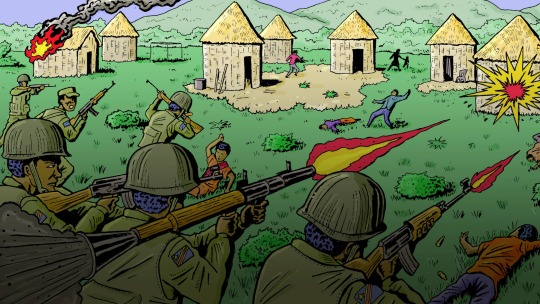
For much of human history, most people lived in rural areas, surrounded by nature and farmland. That all changed with the Industrial Revolution. By the end of the 19th century, European forests were vanishing, cities were growing, and Europeans felt increasingly disconnected from the natural world.
“With industrialization, the link with the natural cycle of things got lost — and that also led to a certain type of romanticization of nature, and a longing for a particular type of nature,” said Bram Büscher, a sociologist at Wageningen University in the Netherlands.
In Africa, Europeans could experience that pure, untouched nature, even if it meant expelling the people living on it.
“The idea that land is best preserved when it’s protected away from humans is an imperialist ideology that has been imposed on Africans and other Indigenous people,” said Aby Sène-Harper, an environmental social scientist at Clemson University in South Carolina.
For Europeans, creating protected parks in Africa allowed them to expand their dominion over the continent and quench their thirst for “undisturbed” nature, all without threatening their ongoing expansion of industrialization and capitalism in their own countries. With each new national park came more evictions of Indigenous people, paving the way for trophy hunting, resource extraction, and anything else they wanted to do.

In the mid-19th century, European colonization of Africa was limited, largely confined to coastal regions. But by 1925, when King Albert created his park, Europeans controlled roughly 90 percent of the continent.
At the time, these parks were playgrounds for wealthy Europeans and part of a massive imperial campaign to control African land and resources. Today, there are thousands of protected national parks around the world covering millions of acres, ranging from small enclosures like Gateway Arch National Park in St. Louis to sprawling landmarks like Death Valley in California and Kruger National Park in South Africa. And the world wants more.
Scientists, politicians, and conservationists are championing the protected-areas model, developed in the U.S. and perfected in Africa. In late 2022, at the United Nations Biodiversity Conference in Montreal, nearly 200 countries signed an international pledge to protect 30 percent of the world’s land and waters by 2030, an effort known as 30×30 that would amount to the greatest expansion of protected areas in history.
So how did protected parks move from an imperial tool to an international solution for accelerating climate and biodiversity crises?
In the early part of the 20th century, the expansion of colonial conservation areas was humming along. From South Africa to Kenya and India, colonial governments were creating protected national parks. These parks provided a host of benefits to their creators. There were economic benefits, including extraction of resources on park land and tourism income from increasingly popular safaris and hunting expeditions. But most of all, the rapidly developing network of parks was a form of control.
“If you can sweep a lot of peasants and Indigenous peoples away from the lands, then it’s easier to colonize the land,” Büscher said.
This approach was enshrined by the 1933 International Conference for the Protection of the Fauna and Flora of Africa, which created one of the first international treaties, known as the London Convention, to protect wildlife. The convention was led by prominent trophy hunters, but it recommended that colonies restrict traditional African hunting practices.
“Conservation is an ideology. And this ideology is based on the idea that other human beings’ ways of life are wrong and are harming nature, that nature needs no human beings in order to be saved,” said Fiore Longo, a researcher and campaigner at Survival international, a nonprofit that advocates for Indigenous rights globally.
The London Convention also suggested national parks as a primary solution to preserve nature in Africa — and as many African countries saw the creation of their first national parks in the first half of the 20th century, the removal of Indigenous peoples continued. The convention was also an early sign that conservation was becoming a global task, rather than a collection of individual projects and parks.
This sense of collective responsibility only grew in the aftermath of World War II, when many international organizations and mechanisms, like the United Nations, were created, ushering in a new period of global cooperation. In 1948, the International Union for Conservation of Nature, or IUCN, the world’s first international organization devoted to nature conservation, was established. This would help pave the way for a new phase of international conservation trends.
By the middle of the 20th century, many countries in Africa were beginning to decolonize, becoming independent from the European powers that had controlled them for decades. Even as they lost their colonies, the imperial powers were not willing to let go of their protected parks. But at the same time, the IUCN was proving ineffective and underfunded. So in 1961, the World Wildlife Fund, or WWF, an international nonprofit, was founded by European conservationists to help fund global efforts to protect wildlife.
Sène-Harper said that although the newly independent African countries nominally controlled their national parks, many of them were run or supported by Western nonprofits like WWF.
“They’re trying to find more crafty ways to be able to extract without seeming so colonial about it, but it’s still an imperialist form of invasion,” she said.
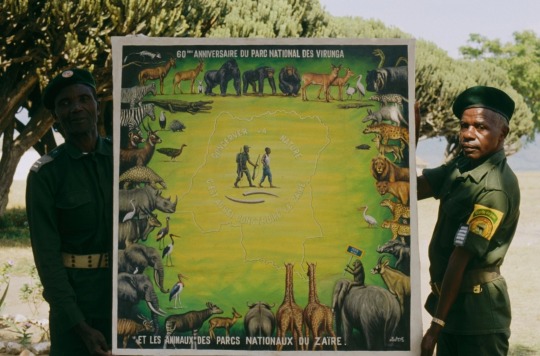
Although these nonprofits have done important work in raising awareness of the extinction crisis, and have had some successes, experts say that the model of colonial conservation has not changed and has only made the problem worse.
Over the years, WWF and other nonprofits have helped fund violent campaigns against Indigenous peoples, from Nepal to the Democratic Republic of the Congo. And amid it all, climate change continues to worsen and species continue to suffer.
In 2019, in response to allegations about murders and other human rights abuses, WWF conducted an independent review that found “no evidence that WWF staff directed, participated in, or encouraged any abuses.” The organization also said in a statement that “We feel deep and unreserved sorrow for those who have suffered. We are determined to do more to make communities’ voices heard, to have their rights respected, and to consistently advocate for governments to uphold their human rights obligations.”
“I think most of [the big NGOs] have become part of the problem rather than the solution, unfortunately,” Büscher said. “The extinction crisis is very real and urgent. But, nonetheless, the history of these organizations and their policies are incredibly contradictory.”
To Indigenous people who had already suffered from decades of colonial conservation policies, little changed with decolonization.
“When we got independence, we kept on the same policies and regulations,” said Mathew Bukhi Mabele, a conservation social scientist at the University of Dodoma in central Tanzania.
In 1992, representatives from around the world gathered in Rio De Janeiro for the United Nations Conference on Environment and Development. The Earth Summit, as it has come to be known, led to the creation of the United Nations Framework Convention on Climate Change as well as the Convention on Biological Diversity, two international treaties that committed to tackling climate change, biodiversity, and sustainable development.
Biodiversity is the umbrella term for all forms of life on Earth including plants, animals, bacteria, and fungi.
Although the Earth Summit was a pivotal moment in the global fight to protect the environment, some have criticized the decision to split climate change and biodiversity into separate conferences.
“It doesn’t make sense, actually, to separate out the two because when you get to the ground, these are going to be the same activities, the same approaches, the same programs, the same life plans for Indigenous people,” said Jennifer Tauli Corpuz, who is Kankana-ey Igorot from the Northern Philippines and one of the lead negotiators of the International Indigenous Forum on Biodiversity.
From left: The 1992 UN Conference on Environment and Development, also known as the Earth Summit, brought together political leaders, diplomats, scientists, representatives of the media, and non-governmental organizations from 179 countries. Indigenous environmentalist Raoni Metuktire, a chief of the Kayapo people in Brazil, talks with an Earth Summit attendee.
In the years following the Earth Summit, biodiversity efforts began to lag behind climate action, Corpuz said.
Protecting animals was trendy during the early days of WWF, when images of pandas and elephants were key fundraising tactics. But as the impacts of climate change intensified, including more devastating storms, higher sea levels, and rising temperatures, biodiversity was struggling to gain as much attention.
“There were 100 times more resources being poured into climate change. It was more sexy, more charismatic, as an issue,” Corpuz said. “And now biodiversity wants a piece of the pie.”
But to get that, proponents of biodiversity needed to develop initiatives similar to the big goals coming out of climate conferences. For many conservation groups and scientists, the obvious solution was to fall back on what they had always done: create protected areas.
This time, however, they needed a global plan, so scientists were trying to calculate how much of the world they needed to protect. In 2010, nations set a goal of conserving 17 percent of the world’s land by 2020. Some scientists have supported protecting half the earth. Meanwhile, Indigenous groups have proposed protecting 80 percent of the Amazon by 2025.
How the world arrived at the 30×30 conservation model
Explore key moments in conservation’s global legacy, from the United States’ first national park in the 19th century to the expansion of colonial conservation areas in the early 20th century and the current push to protect 30 percent of the world’s land and oceans by 2030.
1872: Yellowstone becomes the first national park in the U.S.
1919: King Albert I of Belgium tours Yellowstone, Yosemite, and the Grand Canyon
1925: Albert National Park is established in the Belgian Congo
1933: One of the first international treaties to protect wildlife, known as the London Convention, is created by European conservationists
1948: The International Union for Conservation of Nature (IUCN) is established
1961: The World Wildlife Fund, a non-governmental organization, is founded by European conservationist
1992: The Earth Summit in Brazil creates the Convention on Biological Diversity (CBD)
2010: CBD sets a goal of conserving 17% of the world’s land by 2020
2022: At the UN Biodiversity Conference, nearly 200 countries set 30×30 as an international goal
In 2019, Eric Dinerstein, formerly the chief scientist at WWF, and others wrote the Global Deal for Nature, a paper that proposed formally protecting 30 percent of the world by 2030 and 50 percent by 2050, calling it a “companion pact to the Paris Agreement.” Their 30×30 plan has since gained widespread international support.
But other experts, including some Indigenous leaders, say the idea ignores generations of effective Indigenous land management. At the time, there was limited scientific attention paid to Indigenous stewardship. Because of that, Indigenous leaders say they were largely ignored in the early years of international biodiversity negotiations.
“At the moment, we did not have a lot of evidence,” said Viviana Figueroa, who is Omaguaca-Kolla from Argentina and a member of the International Indigenous Forum on Biodiversity.
Some experts see the push for global protected areas as a direct response to community-based conservation, which grew in popularity in the 1980s, and saw local communities and Indigenous peoples take control of conservation projects in their area, rather than the centralized approach that had dominated during colonial times.

Some of the chief proponents of 30×30 bristle at the suggestion that they do not support Indigenous rights and say that Indigenous land management is at the heart of the initiative.
In response to a request for comment, a spokesperson from WWF pointed to its website, which outlines the organization’s approach to area-based conservation and its position on 30×30: “WWF supports the inclusion of a ‘30×30’ target in CBD’s post-2020 global biodiversity framework (GBF) only if certain conditions are met. For example, such a target must ensure social equity, good governance, and an inclusive approach that secures the rights of Indigenous peoples and local communities to their land, freshwater, and seas.”
“People have cherry-picked a few examples of where the rights of locals have been tread upon. But by and large, in the vast majority of situations, what’s going on is support of local communities, really, rather than anything to do with violation,” said Dinerstein, who now works at Resolve, a Washington, D.C.-based nonprofit focused on environmental, social, and health issues.
But Indigenous advocates say if that were true, they would not keep pushing a model that has already led to countless human rights violations.
“Despite having this knowledge and knowing that people who are not contributing to the destruction of the environment are going to pay for these protected areas, they decided to keep on pushing the target,” Survival International’s Longo said.
The new 30×30 framework agreed to by nearly 200 countries at the UN Biodiversity Conference in December came after years of delay and fierce negotiation. The challenge is now implementing the agreement around the world, a massive task that will require buy-in from individual countries and their governments.
“What was adopted in Montreal is hugely ambitious. And it can only be achieved by a lot of hard work on the ground. And it’s a great document, but it is only a document,” said David Cooper, acting executive secretary of the UN’s Secretariat of the Convention on Biological Diversity.
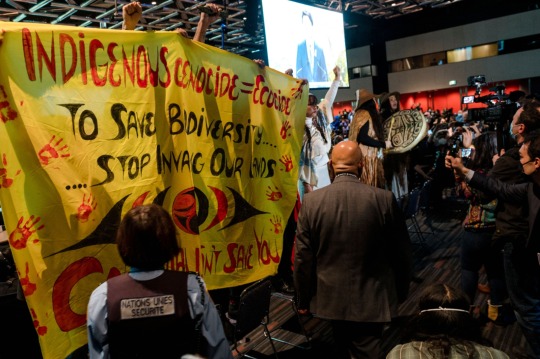
Part of that work is figuring out what land to protect. And although Indigenous negotiators and advocates did manage to get language that enshrines Indigenous rights into the final agreement, they are still concerned. Over a century of colonial conservation has shown that it only serves the powerful at the expense of Indigenous peoples.
“European countries are not going to evict white people from their lands,” said Longo. “That is for sure. This is where you see all the racism around this. Because they know how these targets will be applied in Africa and Asia. That’s what’s going on, they are evicting the people.”
Dinerstein, however, would argue that European countries have less natural resources to preserve, but more financial resources to help other countries.
“There’s a lot that can be done in Europe,” he said. “So we shouldn’t overlook that as well. I’m just making the point that there’s the opportunity to be able to do much more in other countries that have much less resources.”
Cooper said that in addition to implementation, monitoring and ensuring that rights are upheld will be a crucial task over the next seven years. “There will need to be a lot of work on monitoring. There’s always a justified nervousness that any global process cannot really see what’s happening at the local level and can end up with supporting measures that are perhaps not beneficial at the local level,” he said.
Although Indigenous leaders are going to keep fighting to ensure that the expansion of protected areas does not lead to continued violation of their rights, they are worried that the model itself is flawed. “It’s inevitable that the burden is going to fall again on developing countries,” Corpuz said.
#colonial violence#languages#How the world’s favorite conservation model was built on colonial violence#colonialism#brazil#indigenous populations#Yanomami#bolsanaro#the amazon#amazon rainforest#natural resources#ecology
27 notes
·
View notes
Text
Welcome, welcome!

I'm Helena, Decay, or Phantomato which ever one ya'll prefer to call me! Sometimes I write and ramble, and my blog is based around the characters Helena and Helena META! Though my current obsession is all versions of Cú Chulainn from Fate, Archer Emiya from Fate, and Lapis Lazuli from Houseki no Kuni.
The things I write can be taken as platonic or romantic unless explicitly stated that they're platonic! I won't write smut though.

So I thought I'd put this here, but here is my Twst acc!
Also, here is my Azur Lane account the server I'm in is Amagi

Here is my Fate/Grand Order friend code!

~~~~~~~~~~~~~~~~~~~~~~~~~~~~~~~~~~~~~~~~~~~
Helena's interests
I like games such as Azur Lane(obv), Destiny and Destiny 2, YuGiOh duel links, Minecraft, Terraria, Stardew Valley, Fate/Grand Order, and Twisted Wonderland
My current anime list consists of That Time I Got Reincarnated As A Slime, Slime Diaries, Land of the Lustrous, YuGiOh, Azur Lane: Slow Ahead!, Umamusume: Pretty Derby, Takt Op. Destiny, Wonder Egg Priority, The Fate series, and Bofuri
My favorite shows are Helluva Boss, Hazbin Hotel, Steven Universe, FBI, SWAT, 911, 911: Lone Star, Kitchen Nightmares, Master Chef, and the first few seasons of Red vs Blue
~~~~~~~~~~~~~~~~~~~~~~~~~~~~~~~~~~~~~~~~~~~
Helena's writing. Most of my stuff will now also be posted to my Ao3, DecayingHelena, though it's mainly just going to be the James Ironwood stuff
For That He Is Thankful (Rewritten)
Do you fear me? (Rewritten)
Memories of Tempesta(AL x TWST)
Floral Fever(OM)
Floral Fever 2(OM)
Ice cream (Rewritten)
"They called me what?"
"I love you."
Kiss(James Ironwood x reader)(Rewritten)
"Shall we dance?"(Ironwitch)(Rewritten)
A strange craft(RWBY AU)
New hopes(RWBY AU)
James Ironwood headcanons
Unwind with me(RWBY au) (James Ironwood x reader)
James Ironwood headcanons 2
Love and Bad Luck(Ironqrow)
The world of yesterday(Ironwitch)
New Light(RWBY au)
James Ironwood headcanons 3
Valentine's Day(James Ironwood x reader)
The one thing he wished for(James Ironwood x reader)
Ironwitch headcanons
Ironwitch headcanons part 2
Project Personality: Penny Polendina post
Ironwitch headcanons part 3
"Pillows don't talk."(Leona Kingscholar x reader)
~~~~~~~~~~~~~~~~~~~~~~~~~~~~~~~~~~~~~~~~~~~
Helena's rambling
Yuu protecting Malleus(What made me write For That He Is Thankful.)
Aggressive love towards Malleus
Helena's thoughts on Self aware TWST
Helena's thoughts on Self aware TWST 2
Rollo, the twink baguette
Chaotic Yugi Mutou
Helena watches Land of the Lustrous
Silly little twst idea
Silly little twst idea pt2
Silly space idea :3
Aggressive love towards James Ironwood
James Ironwood with a new outfit
Recoil
Helena's obsession with Ironwood
Helena's idea on HnK! James Ironwood
Helena's RWBY tier list
James Ironwood but with Destiny 2 weapons
Helena's back problems
Helena's Hunter
Helena's favorite James Ironwood moments
Helena making fun of their favorite boi
Helena speaks in memes
No sleep Tumblr
Multiships my beloved
Helena's RWDE rant
Helena's nicknames
Helena finding a new obsession
"You brought this upon me."
Cú Chulainns as out of context Discord convos
Cú Chulainns as out of context Discord convos
Cú: Either always kissing death or always going overkill
Nero has no chill
Helena's screentime
Helena condones murder
Clowning on both Europe and America
Helena gets reminded of Malleus
~~~~~~~~~~~~~~~~~~~~~~~~~~~~~~~~~~~~~~~~~~~
Outta context Discord continues
Outta context Discord: Crime edition
My rants are tagged under "Helena Rants", it's mainly some personal issues so if you don't wanna see that then feel free to block that tag
14 notes
·
View notes
Photo
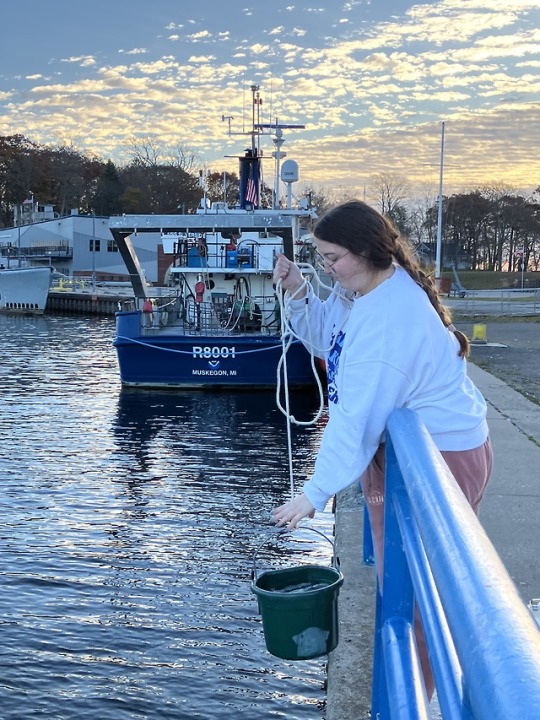
Sink or Source? Quantifying Carbon Flux in a Great Lakes Estuary
Dear AGU:
Occurring at the land-water interface, Earth’s estuaries, are hotspots of carbon cycling. Muskegon Lake is a highly productive urbanized estuary that drains the 2nd largest watershed in Michigan into the 2nd largest Laurentian Great Lake – Lake Michigan. Our aim is to quantify the carbon flux in this dynamic ecosystem through experiments and time-series measurements that track changes in oxygen concentration (as a metabolic proxy for equimolar changes in carbon) in the lake. Here, graduate student Kaylynne Dennis is collecting surface water to fill clear and dark bottles and redeployed in the lake over a full diel cycle to gage the daily rates of photosynthesis and respiration, respectively. Biweekly experimental measurements will be complemented with seasonal ship-board and continuous time-series measurements of oxygen concentration by the Muskegon Lake Observatory (www.gvsu.edu/buoy/). How will river loading, thermal stratification, wind mixing and algal blooms impact in-lake carbon metabolism, and what effect will the ongoing El Niño conditions have on the net carbon balance of this estuary? What bearing will these findings have for estuaries elsewhere – and the global carbon cycle?
– Bopi Biddanda, Kaylynne Dennis, Tony Weinke, Eric Snyder (Annis Water Resources Institute, Grand Valley State University, Muskegon, Michigan, USA www.gvsu.edu/wri/), and Steve Ruberg (NOAA-Great Lakes Environmental Research Laboratory, Ann Arbor, Michigan, USA www.glerl.noaa.gov/).
5 notes
·
View notes
Photo
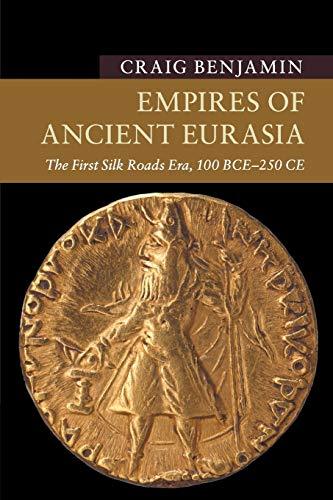
Empires of Ancient Eurasia: The First Silk Roads Era, 100 BCE – 250 CE
In the book's Introduction, Craig Benjamin writes that, between the 2nd century BCE and the mid-3rd century CE, the Silk Roads linked together many cultures and communities throughout Afro-Eurasia. This is the “First Silk Roads Era,” which, according to Benjamin, "resulted in the most significant transregional commercial and cultural interactions experienced by humans to this point in history.” Benjamin, who is Professor of History at Grand Valley State University and President of the World History Association between 2014 and 2015, is well-qualified to make such an observation.
... Benjamin gives value and meaning to what would otherwise be merely a mass of details.
In addition to the Introduction and Conclusion, Empires of Ancient Eurasia: The First Silk Roads Era, 100 BCE - 250 CE contains nine chapters. In the Introduction, Benjamin outlines his argument and locates the Silk Roads within the broader context of contemporary debates around world history. He points out that, what is commonly referred to as the singular "Silk Road" was actually a network of roads. Thus, it is more suitable to call it the "Silk Roads." In Chapter One, he describes the natural environment along the Silk Roads and explains how pastoralists gradually occupied huge areas of the Eurasian steppe. Chapter Two traces the history of early China from the emergence of the first agrarian community to the appearance of the early dynasties. In Chapter Three, Benjamin picks up the story of the Silk Roads' origin by following Zhang Qian's journey from Chang’an, the early Han dynasty's capital, into Central Asia and back.
Continue reading...
49 notes
·
View notes
Text
All meeting at this one site near Brownsville, Texas: the Space/X launch site; the “Gateway to Mars”; the mouth of the Rio Grande; the only population of endangered ocelots surviving within US borders; the edge of the distribution range of the American alligator; unique Rio Grande Valley subtropical ecosystems; Laguna Atascosa National Wildlife Refuge; the spring break tourism industry of nearby South Padre Island; several proposed major fossil fuel export terminals; heavy border patrol surveillance and policing; the US-Mexico border; and Boca Chica.
El*n M*sk in 2018, speaking about the community of Boca Chica: “We’ve got a lot of land with nobody around, and so if it blows up, it’s cool.”
El*n M*sk in 2013, speaking at a hearing before the Texas state legislature’s appropriations committee: This Space/X site will be like “the commercial version of Cape Canaveral.”
El*n M*sk in September 2019, speaking at an event in Boca Chica: “We are working with the residents of Boca Chica village because we think it’s going to be quite disruptive. [...] So probably over time it’s better to buy out the villagers.”
Originally, Space/X has said that this site might host 3 launches per day, requiring 10 billion pounds of rocket fuel usage per year. In May 2019, the company submitted paperwork which proposed so much development that the site’s insurance liability price was increased from $3 million to $100 million. When the site was first constructed, Brownsville city, the county, the state of Texas, and the University of Texas system provided a $40 million incentive package for M*sk and Space/X. In 2013, M*sk’s testimony inspired the state legislature to pass two bills, signed by Governor Perry, that reduced a private company’s liability in case of nuisance and noise complaints and also allowed counties to deny access to public beaches for days or weeks at a time when “spaceflight activities” were scheduled. The only ocelots (the “mini-jaguar”, beloved tropical cat) surviving within US borders live at Laguna Atascosa.



57 notes
·
View notes